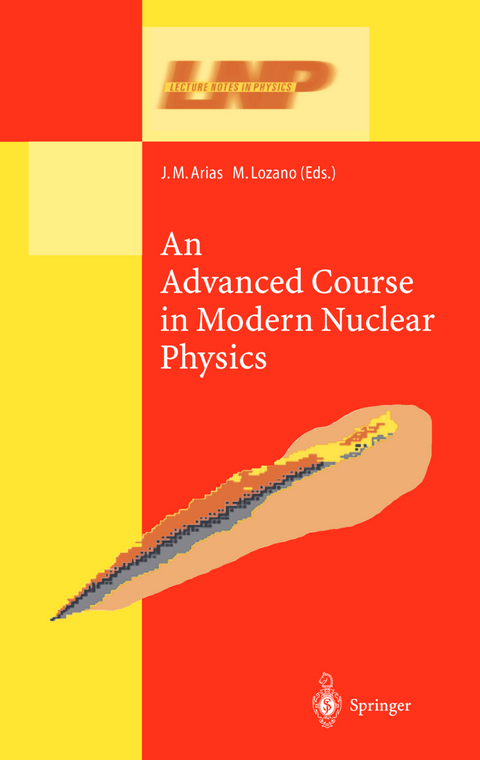
An Advanced Course in Modern Nuclear Physics
Springer Berlin (Verlag)
978-3-642-07624-4 (ISBN)
The theory of the nucleon-nucleon interaction.- The atomic nucleus observed with electromagnetic probes.- The nuclear shell model.- The nuclear collective motion.- The interacting boson model.- The limits of the mean field.- The microscopic treatment of the nuclear system.- Semi-classical methods in nuclear physics.- Scattering and reactions of halo nuclei.- Nuclear physics away from the valley of stability.- Structure of vacuum and elementary matter: from superheavies via hypermatter to antimatter.
From the reviews of the first edition:
"This book is certainly of interest to graduate students and researchers involved in one of the topics treated, since it bridges the gap between a standard textbook and the research literature. Also the extensive list of references at the end of each chapter is a very useful tool for people willing to explore the subject into more detail. The book is very well edited, in the good Springer tradition." (Physicalia, 38/4, 2002)
"This book is a quality presentation of the talks presented at a Summer School held in Seville in 2000. The topics covered include ... NN interactions, the Shell Model, Interacting Boson models, collective motion, halo nuclei and the organizers of the school did manage to attract renowned researchers in these areas such as Witold Nazarewicz, Peter Ring, Walter Greiner and Francesco Iachello. ... The level is certainly at the advanced graduate level ... ." (A. P. Byrne, The Physicist, Vol. 39 (3), 2002)
"The field of nuclear physics is entering the 21st century while experiencing a strong revival. ... This book is a set of extended lectures on basic and new topics ... . It is ideally suited to bridging the gap between the standard textbook material and the research literature, and provides the necessary foundation for acting as those who intend to work in any of the many disciplines where nuclear science and technology is going to play an important role in the future." (ETDE - Energy Database, February, 2002)
| Erscheint lt. Verlag | 4.12.2010 |
|---|---|
| Reihe/Serie | Lecture Notes in Physics |
| Zusatzinfo | XII, 350 p. |
| Verlagsort | Berlin |
| Sprache | englisch |
| Maße | 155 x 235 mm |
| Gewicht | 544 g |
| Themenwelt | Naturwissenschaften ► Physik / Astronomie ► Atom- / Kern- / Molekularphysik |
| Naturwissenschaften ► Physik / Astronomie ► Hochenergiephysik / Teilchenphysik | |
| Schlagworte | Antimatter • Boson • Experiment • nuclear matter • nuclear models • nuclear physics |
| ISBN-10 | 3-642-07624-6 / 3642076246 |
| ISBN-13 | 978-3-642-07624-4 / 9783642076244 |
| Zustand | Neuware |
| Haben Sie eine Frage zum Produkt? |
aus dem Bereich


